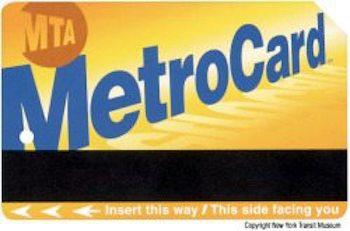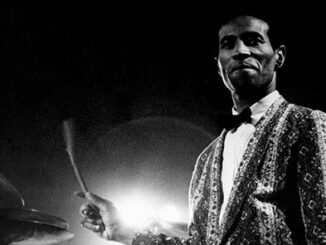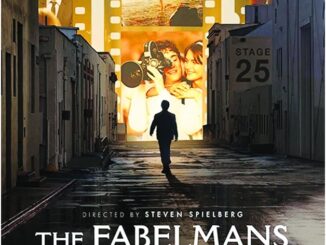
NEW YORK (TIP): New York Times carried a report, October 25, on the replacement of metro card with a “modern way to pay transit fares”. It said, “First there were little paper tickets that cost a nickel. Then there was the nickel itself, because until just after World War II, a nickel was the only thing that made subway turnstiles go around. Then came the dime, followed by the token — the singular currency of New York City. And, since the 1990s, there has been the MetroCard, recognizable, bendable, losable and not always reliable”.
Now that familiar symbol of daily life is something else — outmoded. And it is on the way out.
On Monday, the city’s transit system took a significant step toward a more modern way for passengers to pay their fares. Starting late next year, they can do it the way Londoners already do, by waving cellphones or certain kinds of credit or debit cards at the turnstiles in the subway or the fareboxes on buses.
A committee of the Metropolitan Transportation Authority approved a $573 million contract for a new fare payment system adapted from the one in use for several years on the London Underground and London’s commuter railroads. New electronic readers will be installed in 500 subway turnstiles and on 600 buses in New York beginning late next year, and will reach the rest of the city’s subway stations and buses by late 2020.
“It’s the next step in bringing us into the 21st century, which we need to do,” said Joseph J. Lhota, the chairman of the transit authority. “It’s going to be transformative.”
It will certainly change riders’ habits. No longer will they have to endure frustrating waits in long lines at card-dispensing machines in subway stations, though there will still be machines for people who do not have cellphones or credit or debit cards.
Nor will passengers have to refill their fare cards week after week or month after month. The new system will keep track in an account that riders can check online.
The push to modernize the way fares are paid comes during a disastrous year for the subway system, with delays on every line, rush-hour malfunctions that have strangled the system, and worse: a train derailed in Manhattan in mid-June, injuring dozens of people and raising concerns over whether the subway was even safe. Service deteriorated so much that Gov. Andrew M. Cuomo declared a state of emergency that month.
The challenges involved with making the trains run have to do with the outdated infrastructure in the tunnels and along the tracks, not the somewhat less-antiquated infrastructure of the MetroCard system.
Officials see the new payment system as a way to make getting into subway stations and onto buses faster, though that could bring more passengers into a system that is already straining to handle the millions it carries every day.
The new system will replace the MetroCard, but Metro Cards will not be phased out until 2023 — 30 years after they replaced tokens for subways and buses. Until 2023, passengers can pay their fares the new way or with a MetroCard. The new system will also process fares for the Long Island Rail Road and Metro-North commuter lines, which are also operated by the transportation authority.
The most obvious difference will be what passengers do to go through a subway turnstile or board a bus: wave or tap a smartphone or a credit or debit card, instead of swipe a MetroCard.
The system will work through apps like Apple Pay, Android Pay and Samsung Pay as well as “contactless cards” — credit or debit cards with embedded chips that rely on a wireless technology known as near field communication, or N.F.C.
“The millennial generation, those who are more prone to new technology, will be our greatest users in the early stages,” Mr. Lhota said. He added that card issuers “are going to want to be a part of it” and would add the near-field technology “when they realize that 5.8 to 6 million people in New York City are getting on the subway every day.”
Mr. Lhota said another potential advantage was that fare readers could be installed near the back doors on buses to “allow for all-door boarding.” That would let buses pull away from bus stops sooner than they do now, reducing travel times.
The transit agency is hiring the same company that designed the system in London, which is also the company that developed MetroCard a generation ago. In London, the card that riders use is called the Oyster. In New York, the name has yet to be determined.
The new system will not mean the end of the flat fare that has defined the New York subway system since it opened in 1904. Fares on the London Underground are based on distance, as they are in other cities that use similar technology, like Washington. But Mr. Lhota said he was not contemplating changing the fare structure for the subways. (The Long Island Rail Road and Metro-North do charge by distance, using zones that usually include several stations.)
The reaction from transit advocates to the MetroCard’s eventual demise was generally positive.
“First things first: moving to a modern fare system is a convenience for riders,” said John Raskin, executive director of the Riders Alliance. “It allows them to benefit from the extraordinary innovations the private sector is undertaking these days.” But he said the new system would also benefit the transit agency, which has run its own currency system since the subways were brand new more than a century ago.
“The digital payment world has moved so quickly in the last 20 years that the M.T.A. has been left completely behind,” Mr. Raskin said. “Switching to a system that can take advantage of that means the M.T.A. shouldn’t end up in a situation where in 10 years it’s out of date. It can take advantage of every new innovation that’s yet to come.”
Thomas K. Wright, the president of the Regional Plan Association, an urban policy group, praised the move, predicting that ridership would increase once the new fare system was widely available, just as it did after the MetroCard was introduced.
He called the new fare system “a real win-win and an important step for the M.T.A. to be taking.”
The transit agency has been talking for years about replacing the MetroCard, which made its debut when Bill Clinton was president. The basic fare then was $1.25 — $1.50 less than it is now and $1.75 less than with a single-ride MetroCard.
The transit agency ran a pilot program for a successor to the MetroCard in 2006. Officials hoped to do away with MetroCards by 2012 and believed that contactless bank cards would be the way to the future. But while such cards were popular in Europe, they did not immediately catch on in this country.
The transit authority sought bids for the new system and chose Cubic Transportation Systems, the company behind the MetroCard, from among five proposals. Monday’s vote by the transit authority’s finance committee sends the new fare payment plan to the agency’s board for a final decision on Wednesday.
Cubic signed a licensing deal in 2016 with Transport for London, the transit agency for greater London, that allowed Cubic to take the technology developed for London to other cities.
But calls about New York’s new fare payment system, once it is installed, will be answered nearly 400 miles away, in Buffalo. Cubic plans to open a call center there, putting jobs in an area that is struggling economically but is important politically to state officials like Mr. Cuomo, who controls the transit agency.
(Source; The New York Times)





Be the first to comment